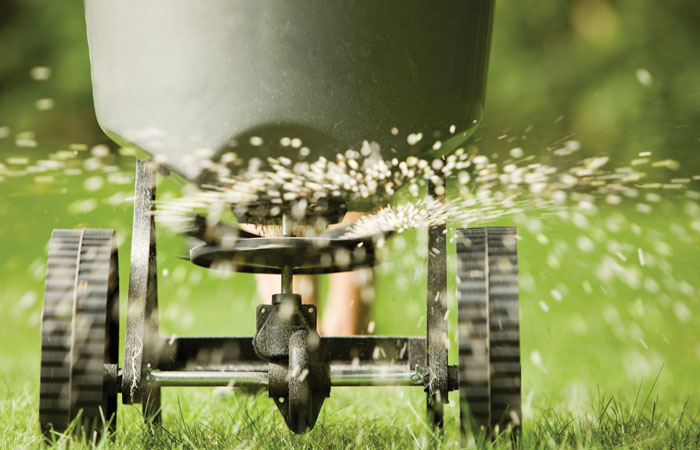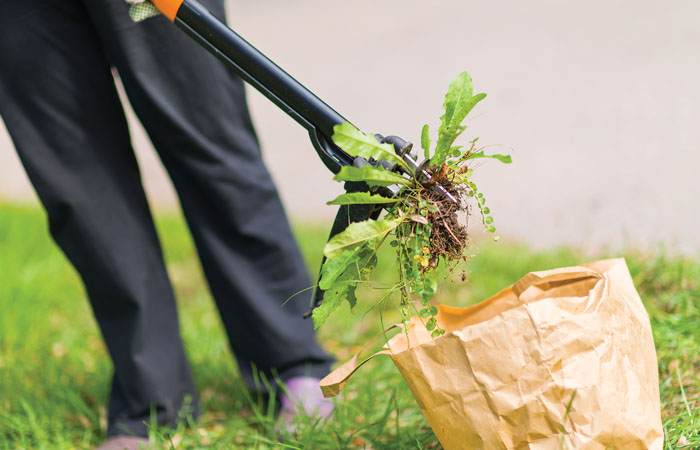There is perhaps no more asked question and misunderstood answer in the history of the green industry than, what do those numbers on the fertilizer bag mean? It can certainly be daunting standing in your local garden center in a sea of 50-pound bags and staring at all those numbers in bold print such as 10-10-10, 16-4-8 or the confusion of a 0-0-50. So this month, Avid Golfers, we will unravel the mystery of the actual meaning of those numbers on the fertilizer bag and review the data that all labels hold, that can help you choose and apply the best products available.
Plant Fertilizer 101
First things first, plants require 17 essential elements or nutrients for growth: They are carbon (C), hydrogen (H), oxygen (O), nitrogen (N), phosphorus (P), potassium (K), sulfur (S), calcium (Ca), magnesium (Mg), boron (B), chlorine (Cl), copper (Cu), iron (Fe), manganese (Mn), molybdenum (Mo), nickel (Ni), and zinc (Zn). If you are a vintage gardener, you may argue that there are only 16 essential plant nutrients, but science is always evolving and growing, and nickel (Ni) was added to the official list in 2004. We refer to these essential nutrients when selling or producing fertilizer in three distinct groups. The primary nutrients are group one and are used in the largest amounts by the plant. The secondary nutrients are used moderately by plants but preform critical functions and, lastly, micronutrients are used in small quantities but are still required for plants to be in optimum health. Secondary and micronutrients are always listed on the product label but are usually in the fine print. The amount of all nutrients found in any given fertilizer product is required by law to be listed on every bag of fertilizer sold. This applies to all types of fertilizer, granular or liquid. The label contains all of the critical information about the product and how to apply it safely.

Now let’s take a deeper look at the numbers on that fertilizer bag and shed some light on just exactly what you are buying.
The Big Three Numbers
When you see those three big numbers on any bag of fertilizer, they represent the three primary nutrients that all plants use the most. They are nitrogen, phosphorous and potassium (remember there are 17 essential plant nutrients but these three are used in the largest quantities by the plant) and they are listed in that order (N, P and K) on every bag of fertilizer and the number that you see represents the percentage of that nutrient in that bag of fertilizer. For example, a 16-4-8 bag of fertilizer has 16% nitrogen, 4% phosphorous and 8% potassium. A 0-0-50 bag of fertilizer has no nitrogen or phosphorous, but has 50% potassium in the bag. The manufacturer will always list the big three nutrients – even if not all nutrients are present in the bag – to be consistent. By definition, a complete fertilizer has some percentage of all three primary nutrients.
Read the Fine Print
If you take a closer look at the label on the fertilizer bag, you will find a detailed list of all the lesser nutrients in the bag and that is where you will find the included secondary nutrients. By definition, the secondary nutrients are those nutrients usually needed in moderate amounts compared to the primary essential nutrients. The secondary nutrients are calcium, magnesium, and sulfur. Micro- or trace nutrients are required in tiny amounts compared to primary or secondary nutrients. Secondary nutrients are responsible for plant functions, such as root permeability, enzyme activity and chlorophyll production.
Read the Even Finer Print
When you really look closely at the fertilizer label, you will find a listing of the nutrients present that are used in very small quantities by the plant. They are essential plant nutrients and are defined as micronutrients and include [boron (B), zinc (Zn), manganese (Mn), iron (Fe), copper (Cu), molybdenum (Mo), chlorine (Cl), nickel (Ni)]. They constitute, in total, less than 1% of the dry weight of most plants. Micronutrients are often sold as specialty products, with unique blends of these nutrients based on specific crop needs. Micronutrients impact enzyme production, pigmentation and nitrogen fixation within the plant. You may have already done the math and realized that, while there are 17 essential plant nutrients, we have only covered 14 that appear on the fertilizer bag label. Well done Avid gardeners! The other three elements are non-mineral nutrients (carbon, hydrogen and oxygen) and are available as a gas or in water (H20). So for our purposes in buying fertilizer, we are purchasing mineral nutrients in various forms.

Buy Only What You Need
We try to only apply fertilizer to correct deficiencies or to keep plant nutrients in the recommended range. It is also important to note that soil pH can impact the availability of soil nutrients to the plant, but that is another question for another day. The best way to know what the status of your soil fertility and pH actually are is to take a soil test. Soil pH impacts the availability of nutrients to be taken up into the plant through the root system, so it is possible the nutrient can be present but not able to be absorbed by the plant due to high or low pH.
Now for another insider tip, you can have a quick soil test done for just $12.00 by the Texas A&M Agrilife Extension Service, providing basic soil analysis (including pH) and recommendations on the crop or lawn grass being grown. You can get all the information about soil testing, including how to take a proper soil sample, at their website www.soiltesting.tamu.edu … so no excuses. The soil report will tell you the exact formulation of fertilizer and/or amendments to use and at what rate (pounds per 1,000 square feet of area) to apply to keep your lawn and garden healthy.
You can get step-by-step instructions from the November 2020 issue of AVIDGOLFER in the online archive at myavidgolfer.com/the-magazine/ under “Ask the Superintendent.”
Fertilizers are critical in maintaining a healthy lawn and landscape, but understanding the basics of what products to buy and apply is often the difference in success and failure. Once you understand the basics, the entire process gets easier and takes less time. This means you have even more time to play golf, not to mention impress your friends with your new-found knowledge.